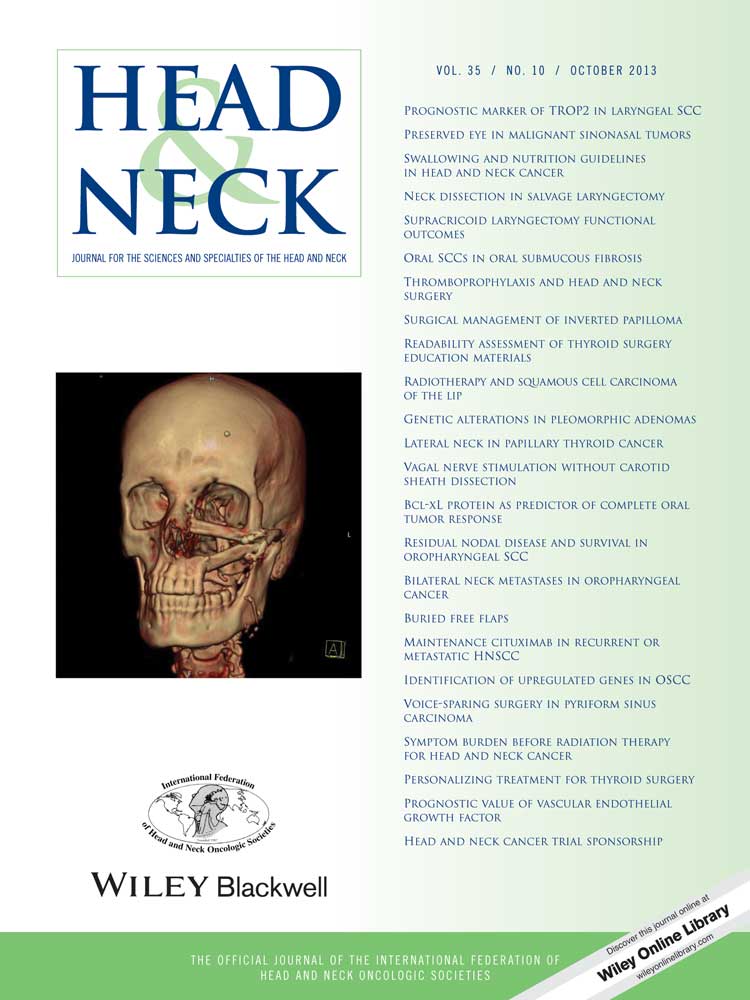Surgical management of inverted papilloma: Approaching a new standard for surgery
Abstract
Background
Inverted papilloma surgery is currently performed primarily with an endoscopic approach, a technique that has a recurrence rate of 12%. However, a recent study reported a recurrence rate of 5% with a strategy based on subperiosteal dissection of the tumor, with limited indications for using an external approach. The aim of this work was to evaluate whether different teams using the same surgical concepts could reproduce the excellent results that were recently reported.
Methods
This study is a retrospective chart review of 71 consecutive patients with inverted papilloma who were treated during the last 10 years.
Results
In all, 80% of the patients were treated using a purely endoscopic approach. The mean follow-up period was 31.6 months. The recurrence rate was 3.3% for cases with at least a 12-month follow-up.
Conclusions
This work confirms the results described in recent literature and further supports transnasal endoscopic surgery to manage inverted papilloma. © 2012 Wiley Periodicals, Inc. Head Neck 35: 1415–1420, 2013




